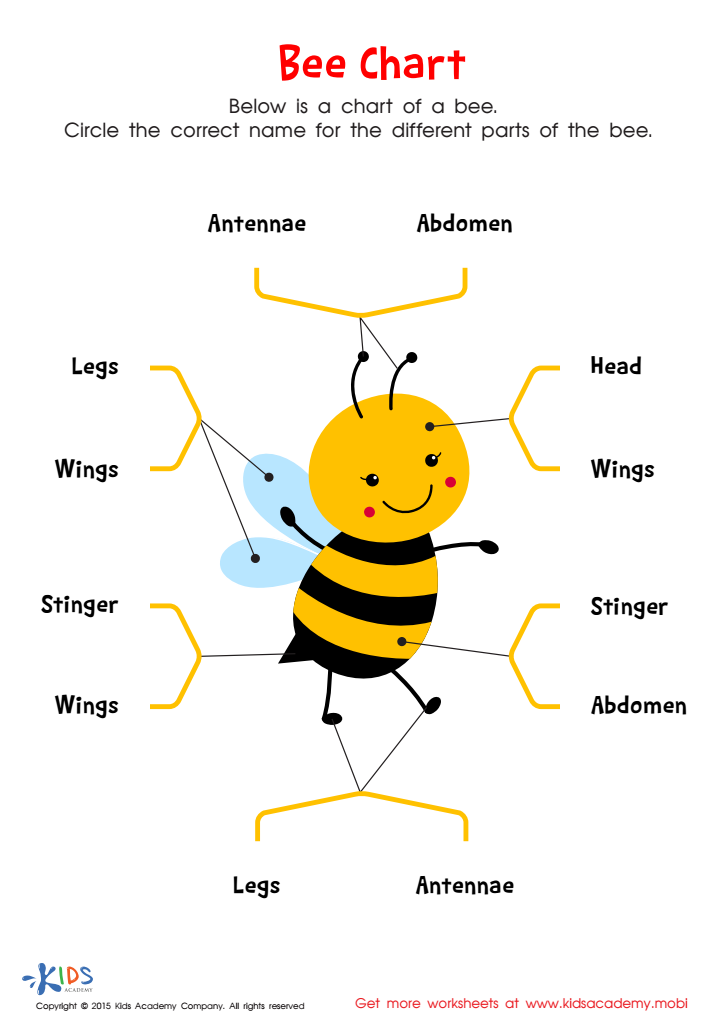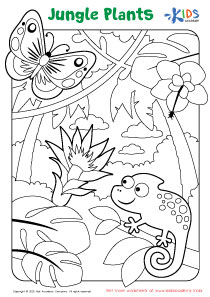Animals Worksheets for Ages 3-6
36 filtered results
-
From - To
Explore our delightful collection of animals worksheets, designed specifically for children aged 3-6! These engaging, printable resources introduce young learners to the fascinating world of animals through fun activities that promote creativity and motor skills development. Each worksheet features vibrant illustrations and age-appropriate tasks perfect for fostering a love of nature. From coloring pages to matching games, our worksheets encourage exploration and learning about various animals and their habitats. Ideal for both home and classroom use, our animal-themed worksheets make learning enjoyable and interactive. Dive into the wild with your little ones and spark their curiosity about the animal kingdom today!
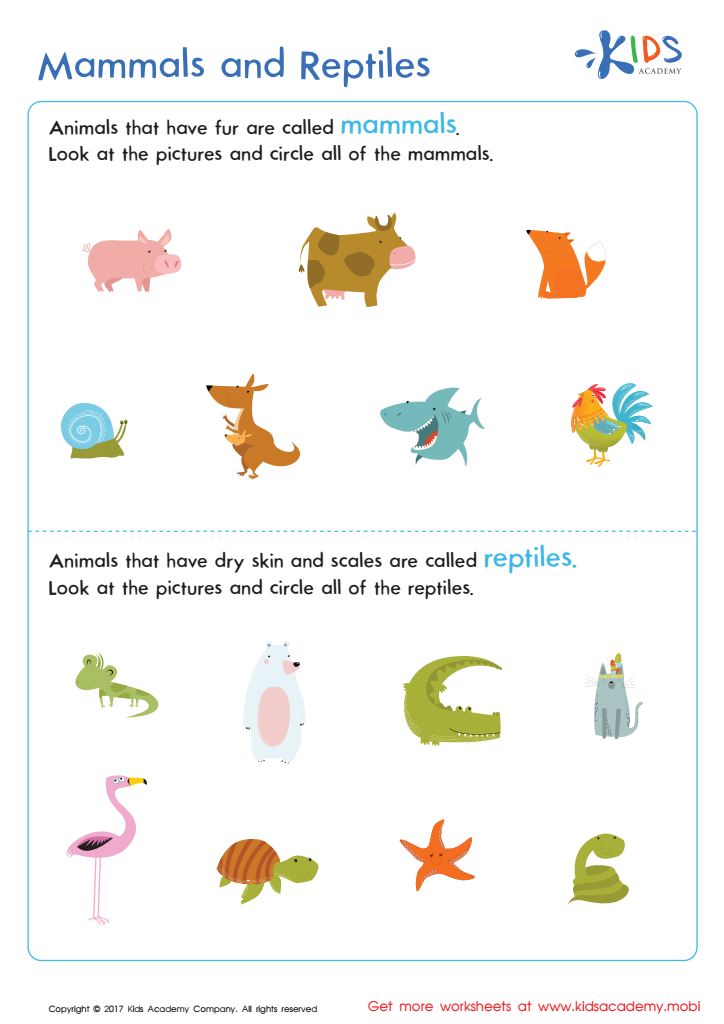

Mammals and Reptiles Worksheet


African Wildlife: Giraffe Worksheet
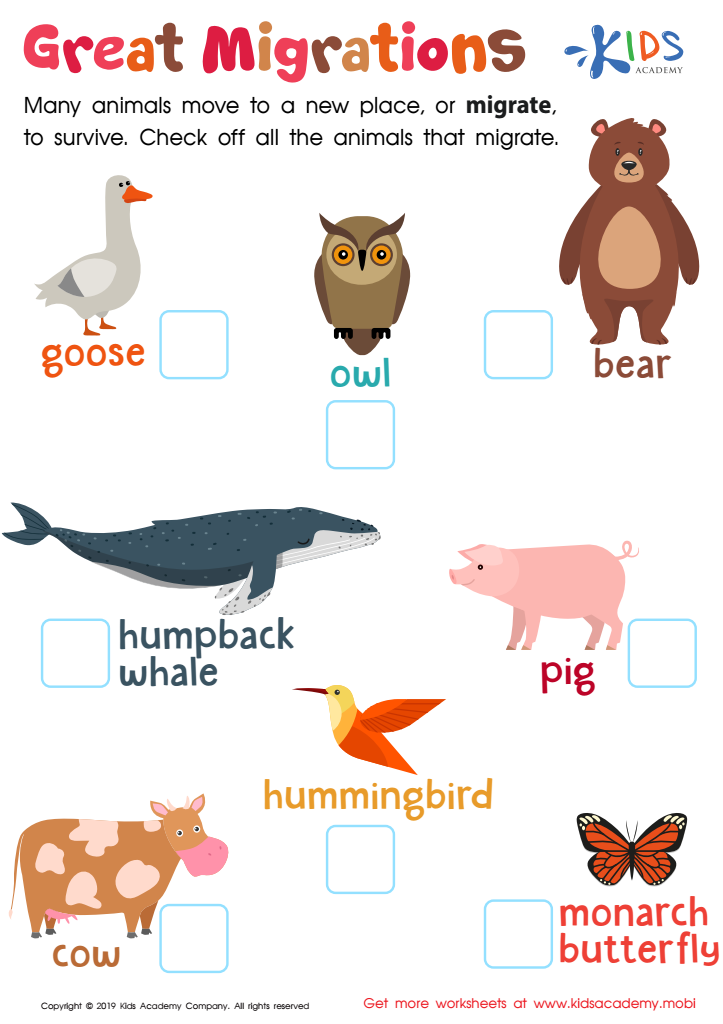

Great Migrations Worksheet
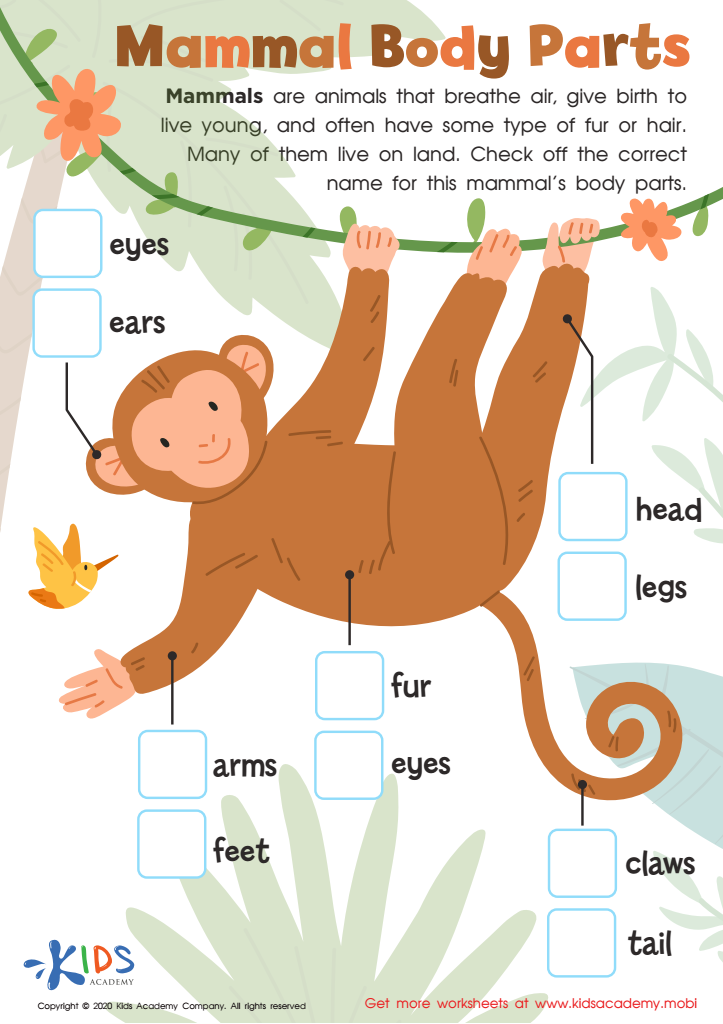

Mammal Body Parts Worksheet
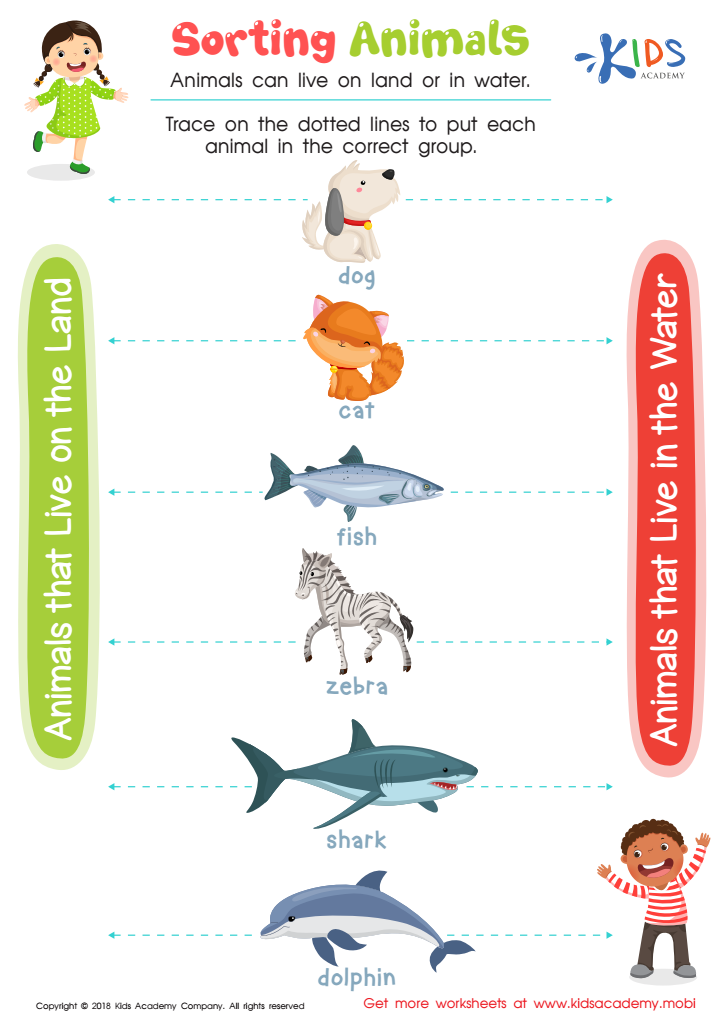

Sorting Animals Worksheet
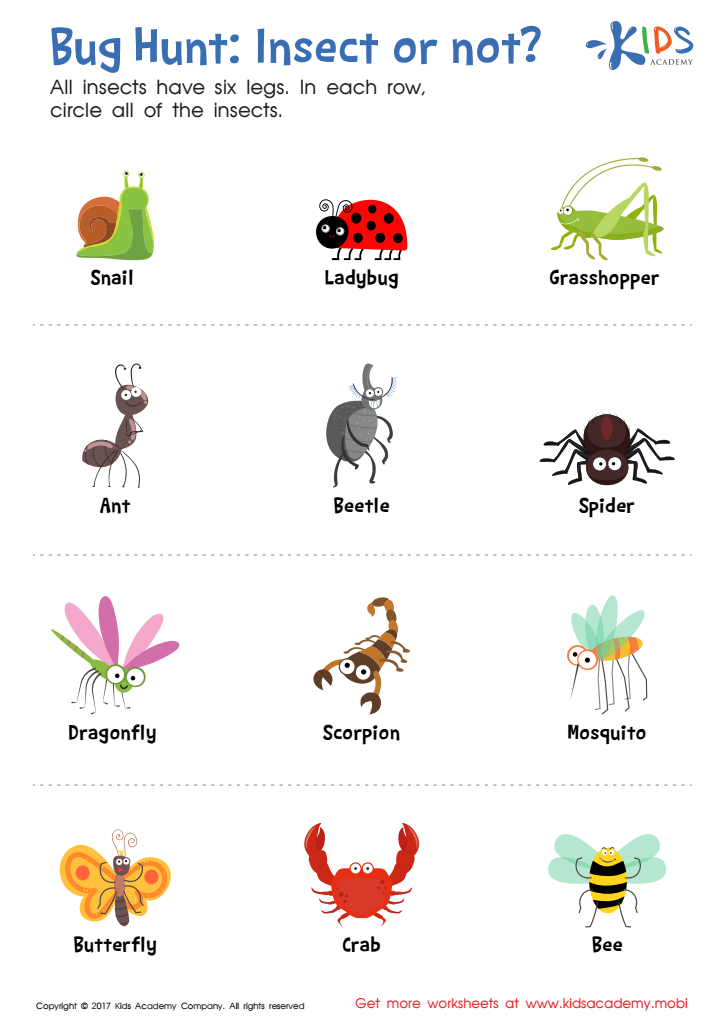

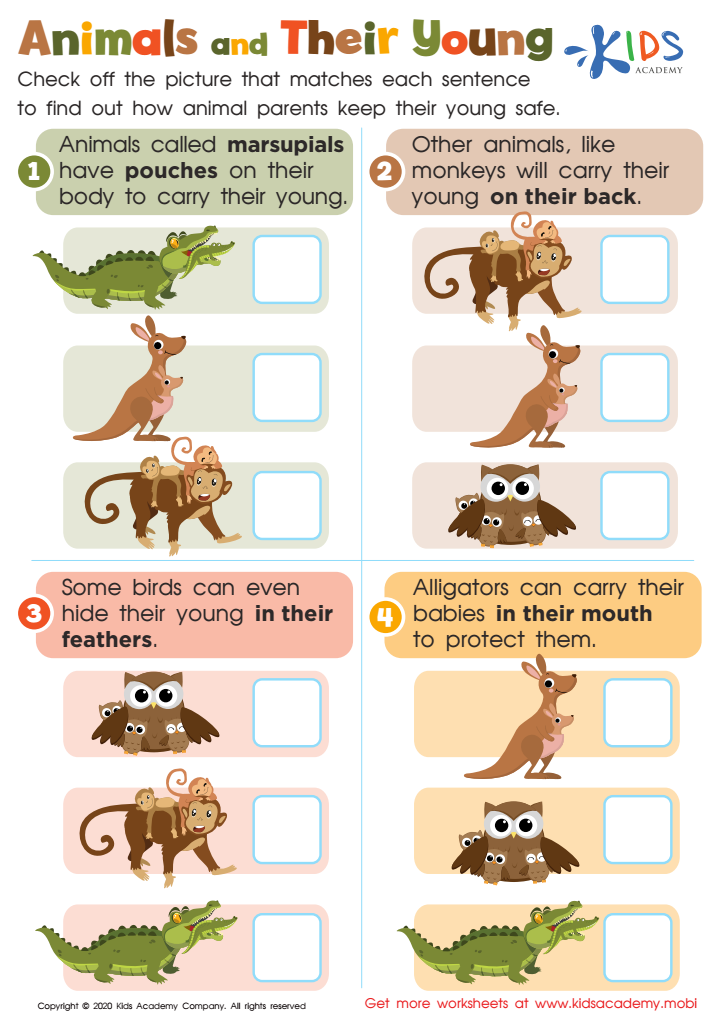

Animals and Their Young Worksheet
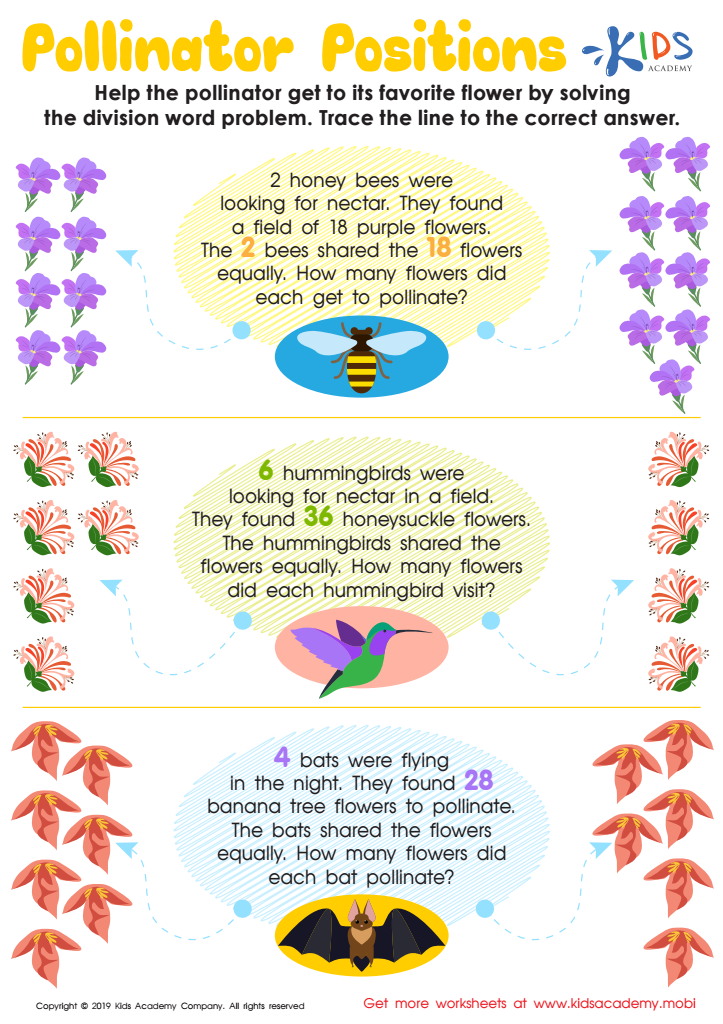

Pollinator Positions Worksheet


Animal Homes Worksheet
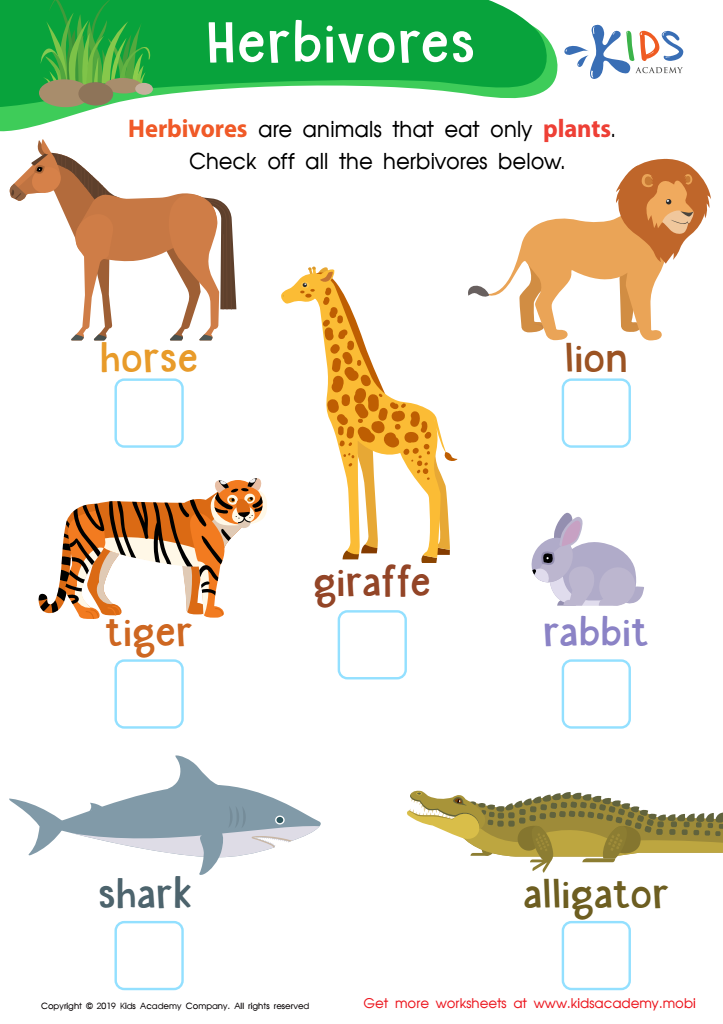

Herbivores Worksheet
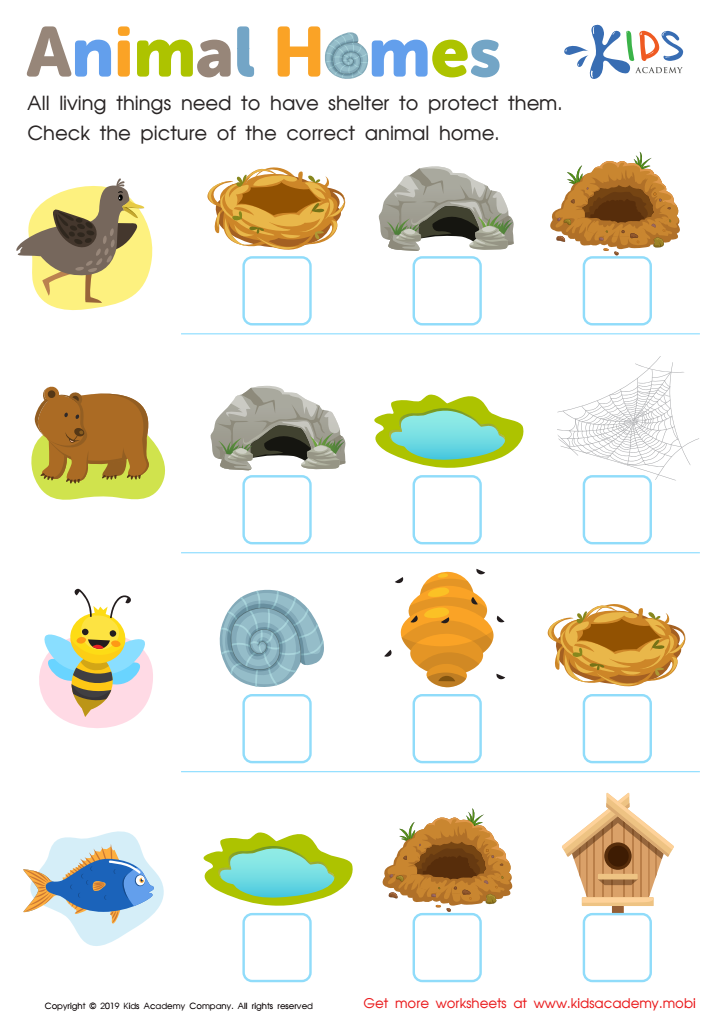

Animal Homes Worksheet
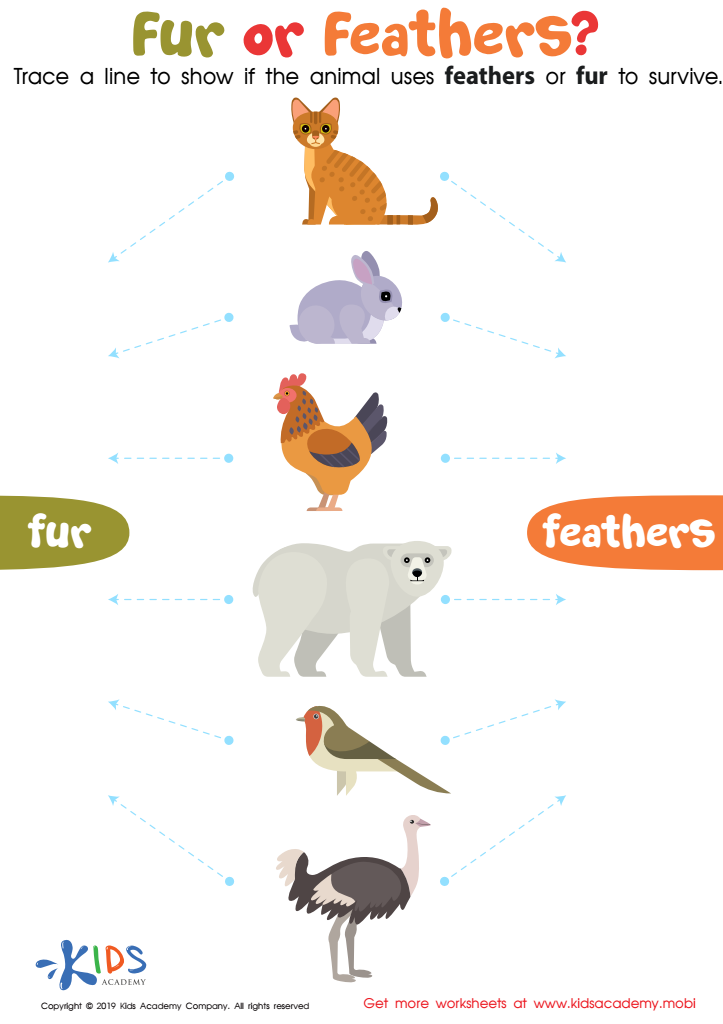

Fur or Feathers? Worksheet
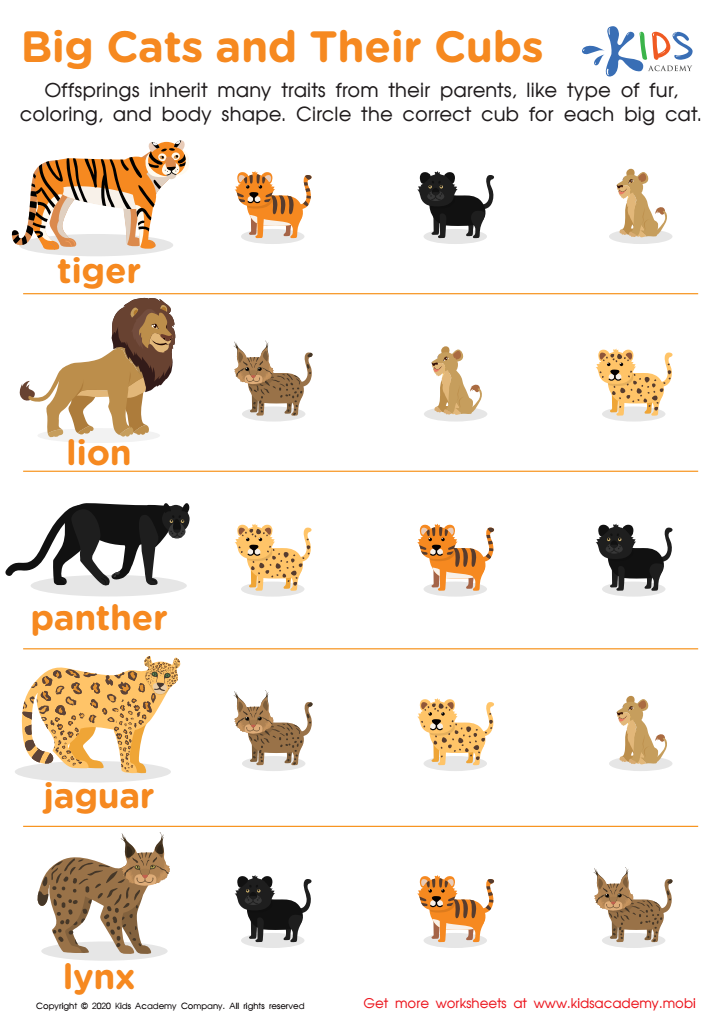

Big Cats and Their Cubs Worksheet
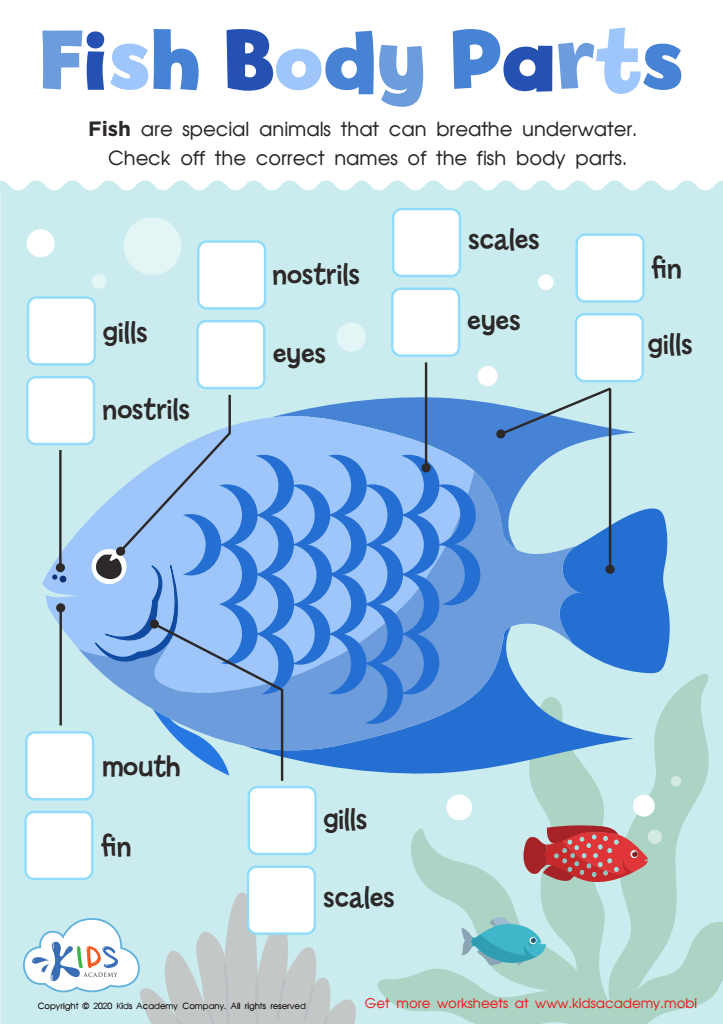

Fish Body Parts Worksheet
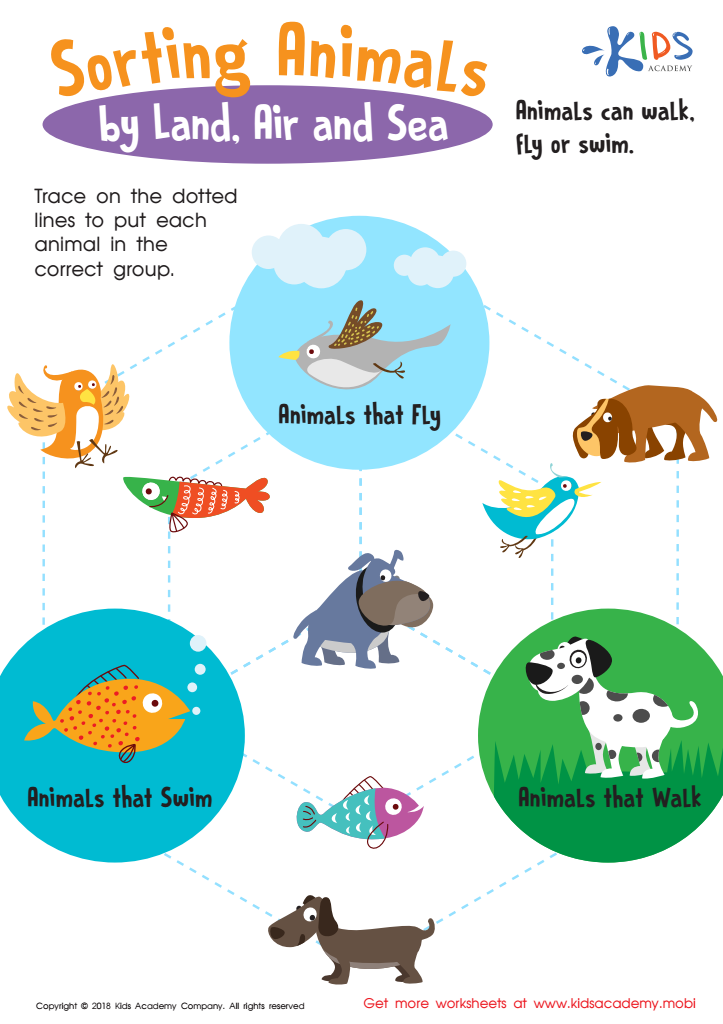

Sorting Animals by Land, Air and Sea Worksheet
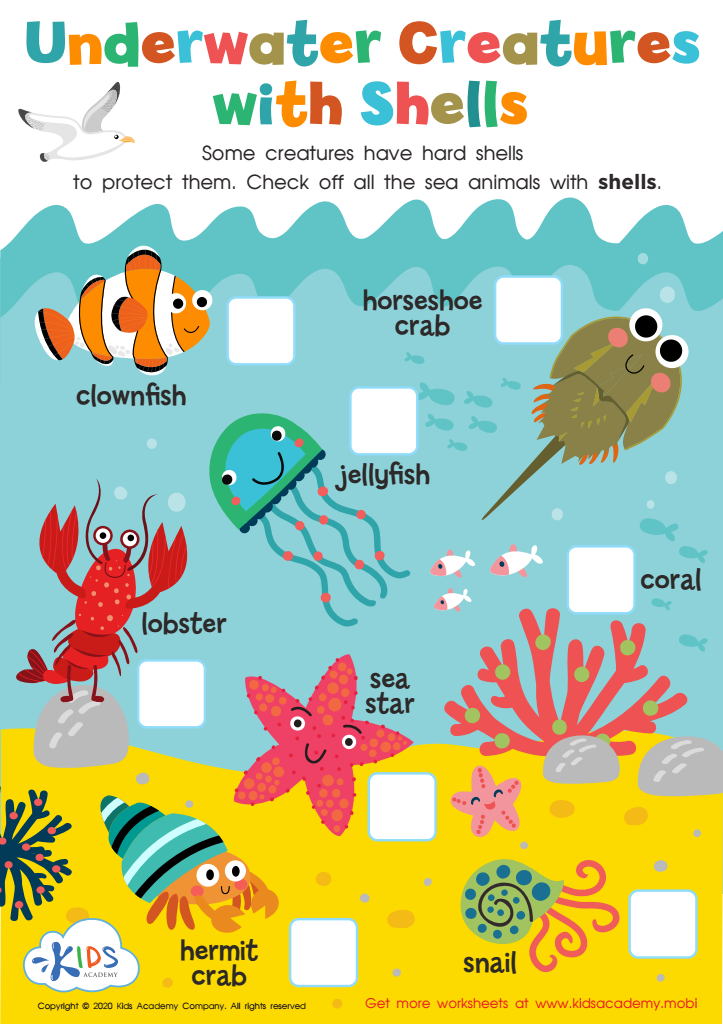

Underwater Creatures with Shells Worksheet
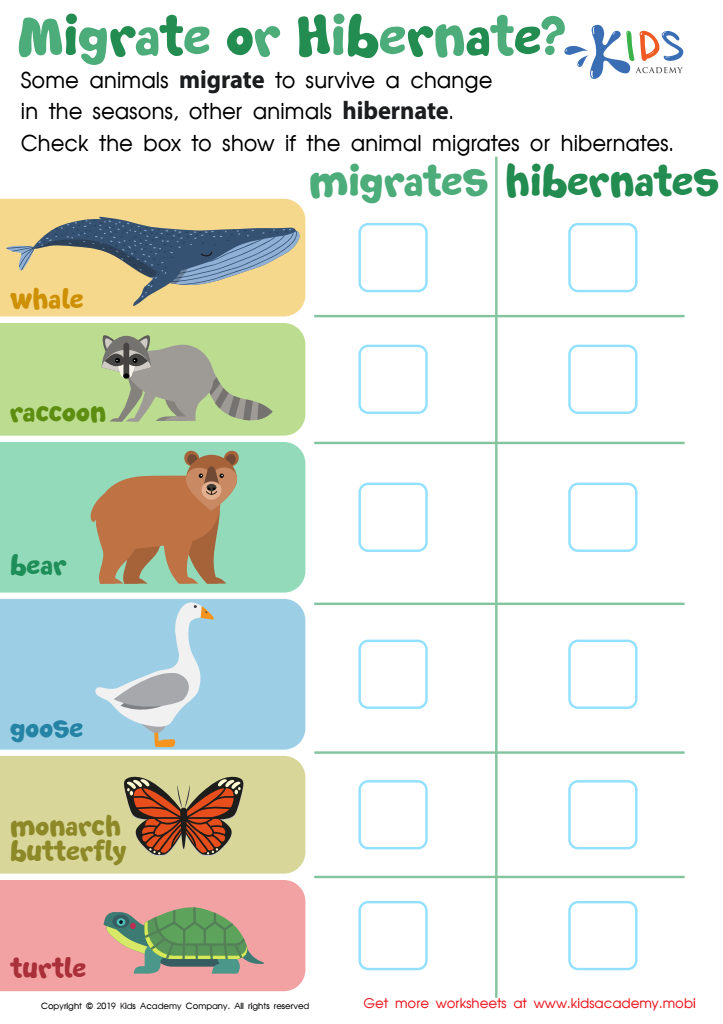

Migrate or Hibernate? Worksheet
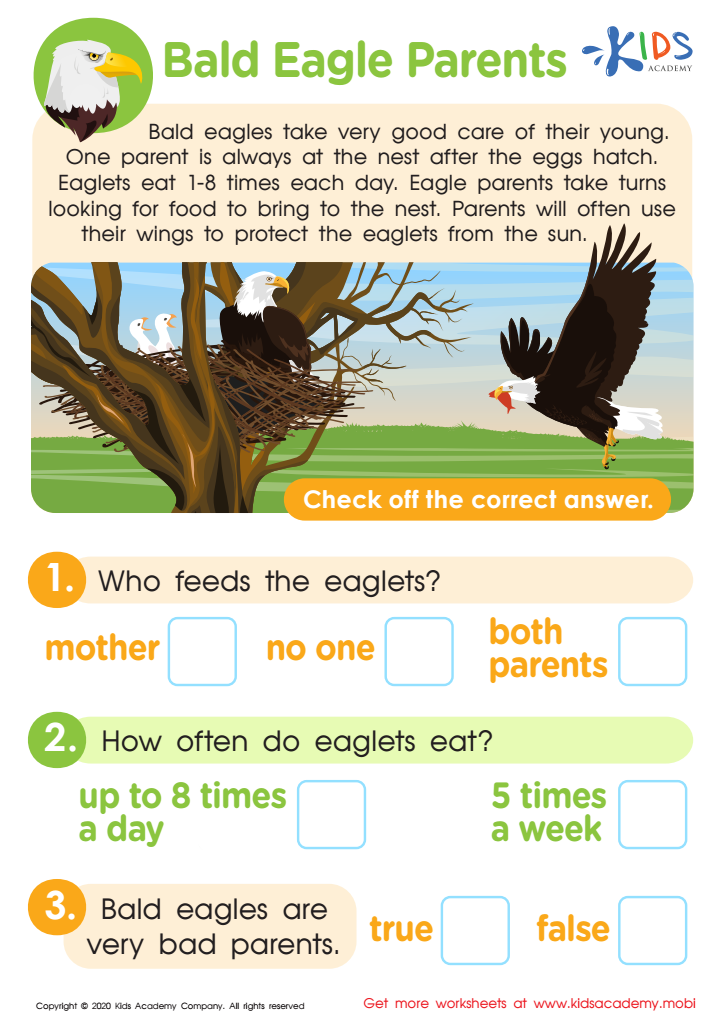

Bald Eagle Parents Worksheet
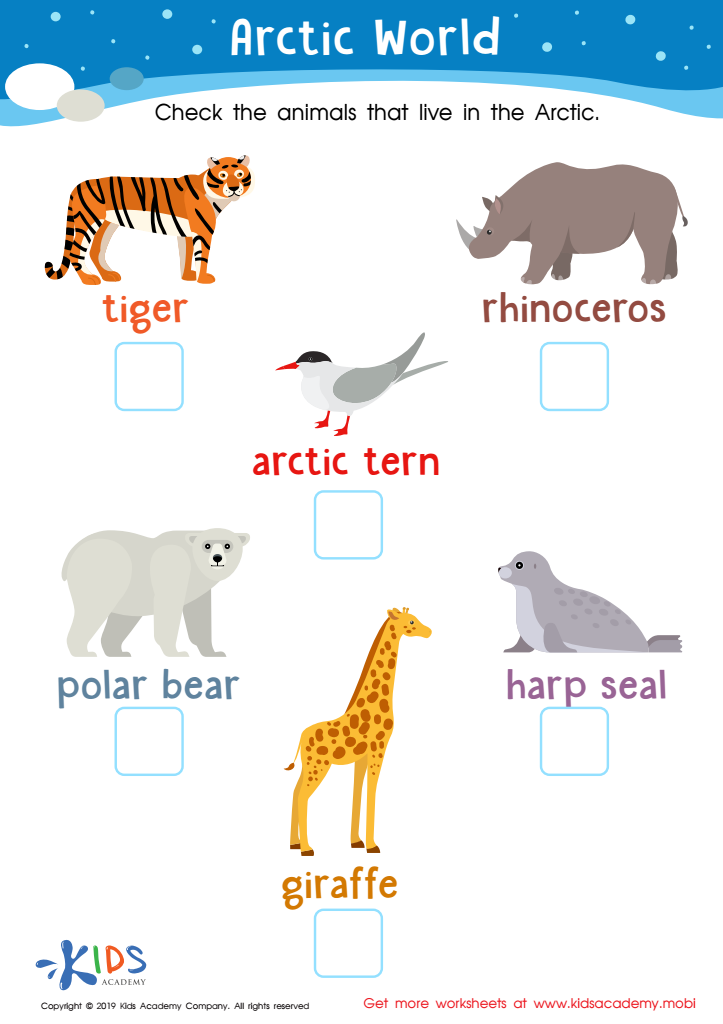

Arctic World Worksheet
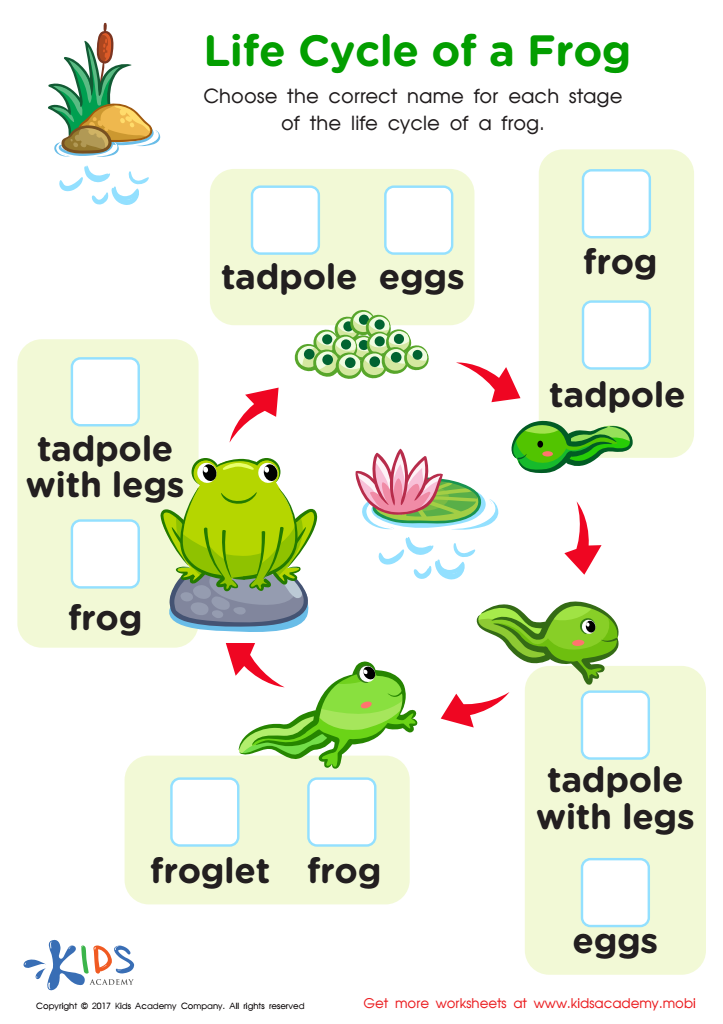

Life Cycle Frog Printable
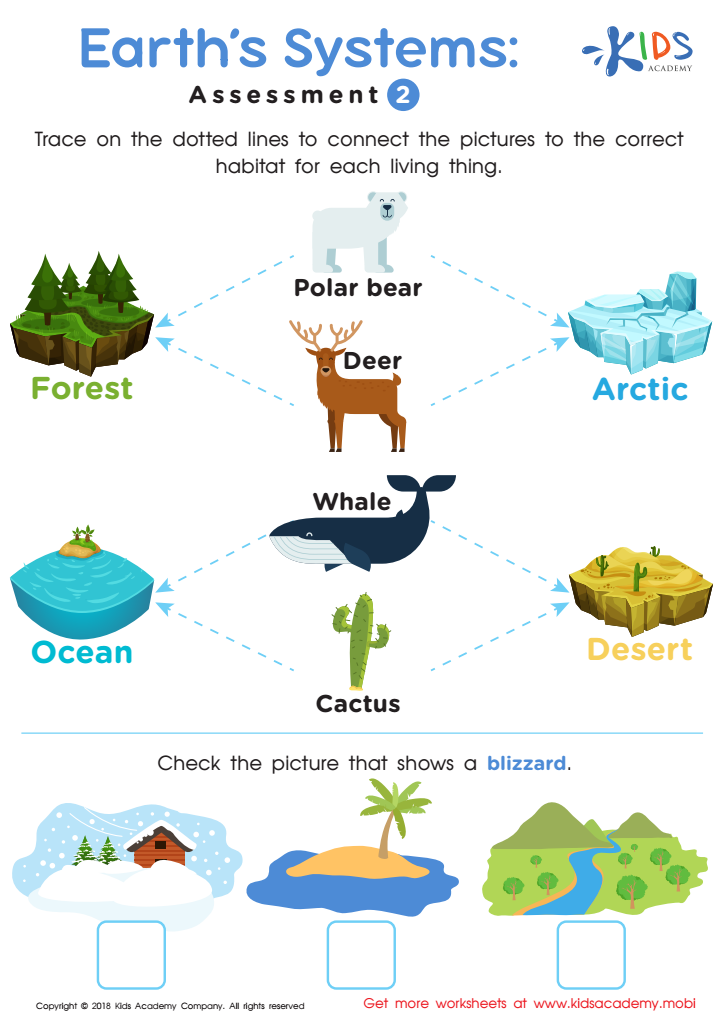

Earth's Systems: Assessment 2
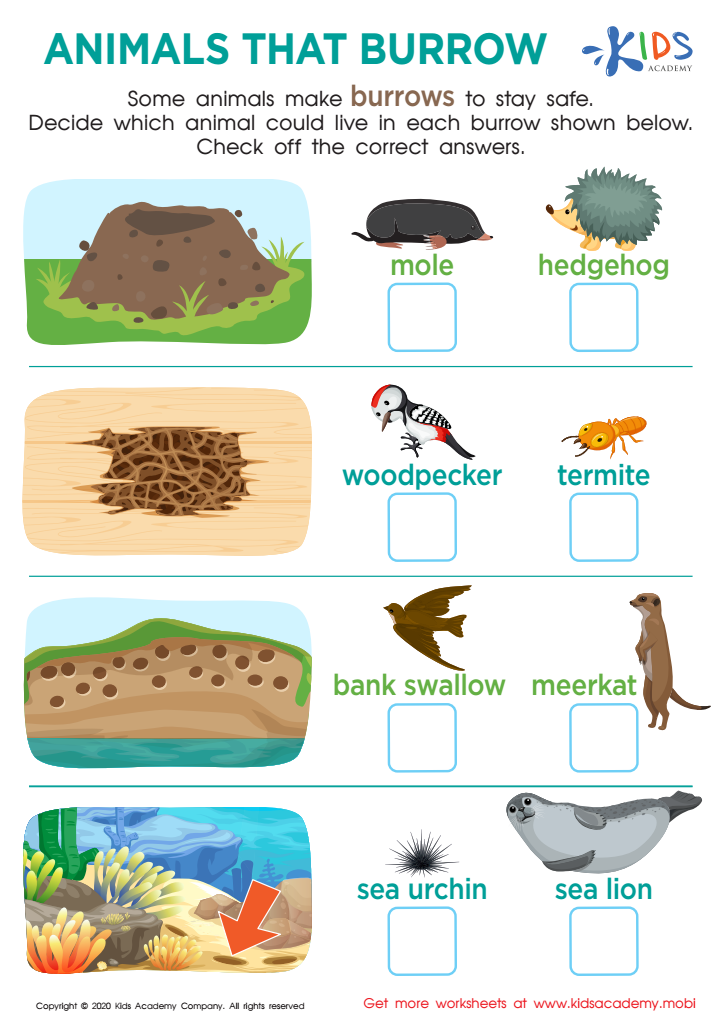

Animals That Burrow Worksheet
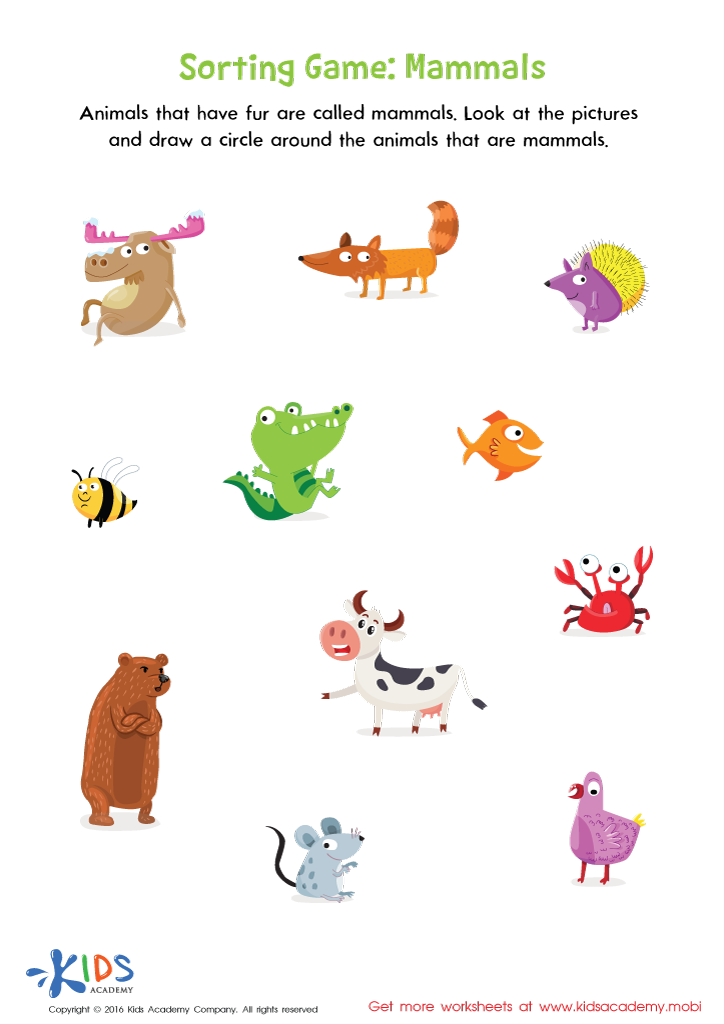

Mammals Sorting Worksheet
Parents and teachers should care about animals for children ages 3-6 because early connection with animals fosters empathy, compassion, and a sense of responsibility in young learners. At this crucial developmental stage, children are naturally curious about the world around them, and introducing them to animals provides countless learning opportunities. Through observing and interacting with animals, children can learn about life cycles, ecosystems, and environmental stewardship in a hands-on, engaging way. This not only enhances their cognitive development but also offers valuable lessons in biology and ecology.
Moreover, animals can play a crucial role in teaching social skills and cooperative behaviors. Interactions with pets or during group activities such as visiting a farm can encourage sharing, turn-taking, and communication. These experiences help children develop strong interpersonal skills.
Caring for animals also promotes emotional development. Children learn empathy as they see and respond to the needs of living creatures, helping them understand emotions and the importance of caring for others. Overall, integrating animals into early childhood education enriches the learning experience and creates a foundation for compassionate, responsible adults who appreciate and protect the world around them.

 Assign to My Students
Assign to My Students



